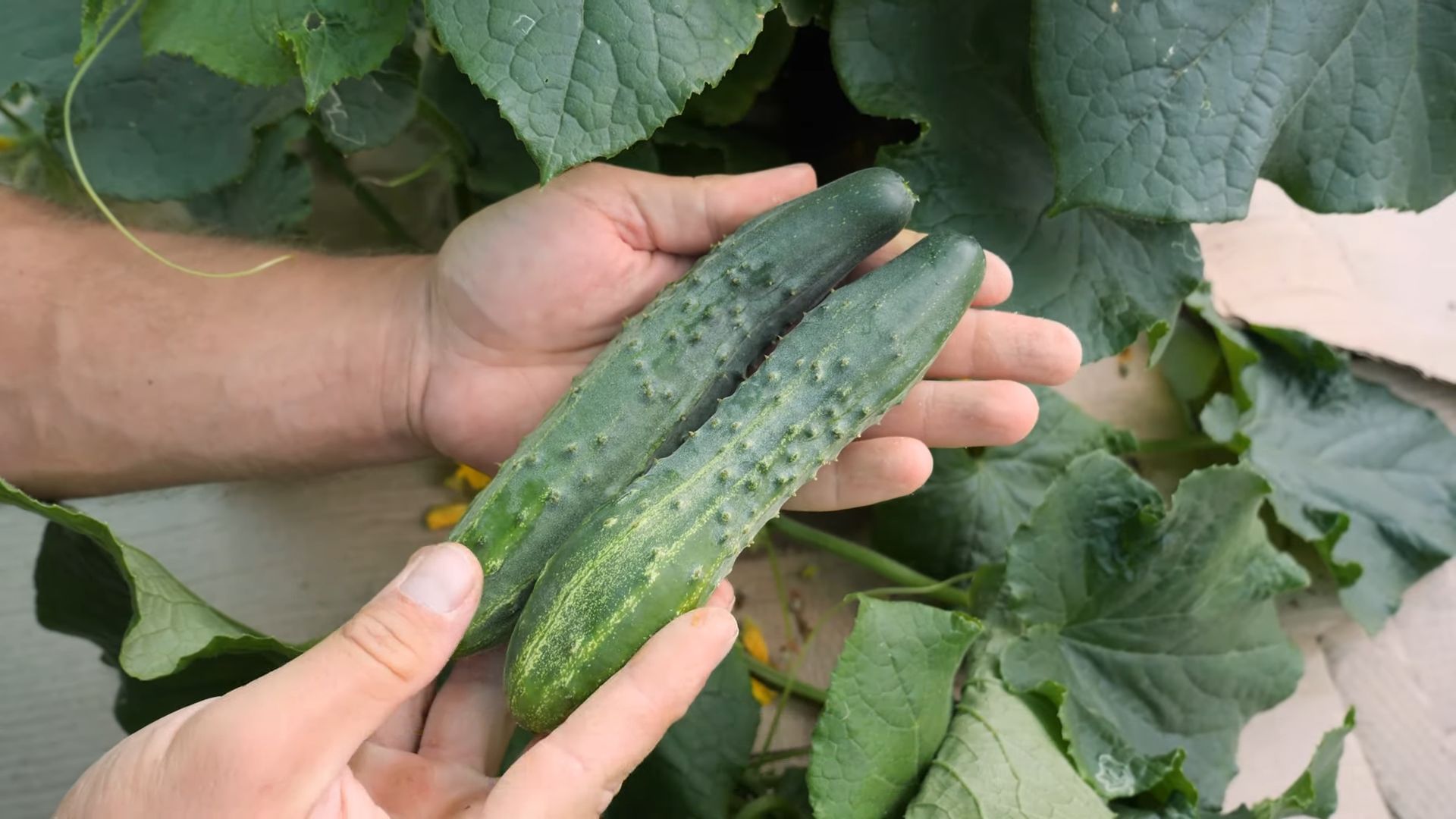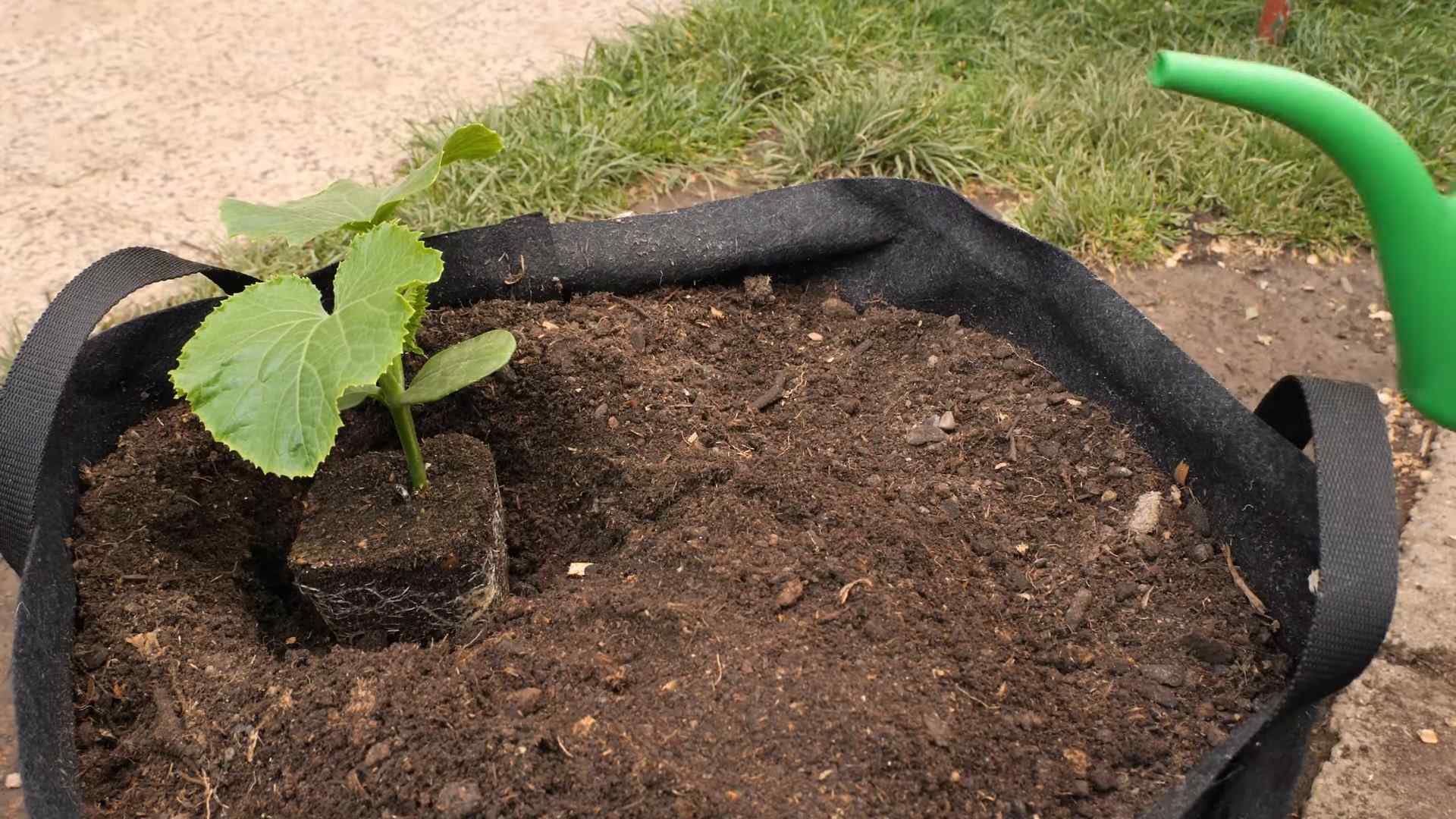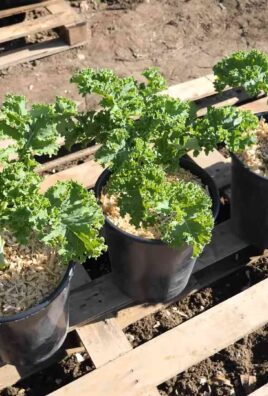Grow Cucumbers at Home? Absolutely! Imagine biting into a crisp, refreshing cucumber you nurtured from a tiny seed right in your own backyard. It’s not just a dream; it’s an achievable reality with a few clever tricks and DIY hacks. For centuries, cucumbers have been a staple in gardens worldwide, dating back to ancient India where they were first cultivated. Their versatility in culinary dishes and refreshing qualities have made them a beloved vegetable across cultures.
But let’s face it, sometimes growing cucumbers can feel like a challenge. Pests, diseases, and lack of space can all throw a wrench in your gardening plans. That’s where these DIY tricks come in! I’m here to share some simple, effective methods to help you grow cucumbers at home successfully, even if you have limited space or a less-than-green thumb. These hacks will help you maximize your yield, combat common problems, and enjoy a bountiful harvest of delicious cucumbers all season long. So, grab your gardening gloves, and let’s get started!

Grow Your Own Delicious Cucumbers: A DIY Guide
Hey there, fellow gardening enthusiasts! I’m so excited to share my tried-and-true method for growing cucumbers right at home. There’s nothing quite like the crisp, refreshing taste of a homegrown cucumber, and trust me, it’s easier than you think! This guide will walk you through every step, from choosing the right variety to harvesting your bounty. Let’s get started!
Choosing the Right Cucumber Variety
Before we even think about planting, let’s talk cucumbers! There are tons of different varieties, and picking the right one for your space and needs is key.
* Slicing Cucumbers: These are your classic cucumbers, perfect for salads and sandwiches. Think ‘Marketmore’ or ‘Straight Eight’. They usually have smooth, dark green skin.
* Pickling Cucumbers: Shorter and stubbier than slicing cucumbers, these are ideal for, you guessed it, pickling! ‘National Pickling’ and ‘Boston Pickling’ are popular choices. They often have bumpy skin.
* Burpless Cucumbers: These are bred to be less bitter and easier to digest. ‘Sweet Slice’ and ‘Armenian’ (which is technically a melon, but often grown like a cucumber) are great options.
* Bush Cucumbers: If you’re short on space, bush varieties are your best friend! They grow in a compact form, making them perfect for containers. ‘Spacemaster’ and ‘Bush Champion’ are good choices.
My Recommendation: For beginners, I usually suggest starting with a bush variety like ‘Spacemaster’ or a burpless variety like ‘Sweet Slice’. They’re generally more forgiving and easier to manage.
Preparing for Planting: Location, Soil, and Support
Cucumbers are sun-loving plants, so finding the right spot is crucial.
* Sunlight: Cucumbers need at least 6-8 hours of direct sunlight per day. The more, the better!
* Soil: They prefer well-drained, fertile soil that’s rich in organic matter. A slightly acidic to neutral pH (6.0-7.0) is ideal.
* Support: Vining cucumber varieties need support to climb, like a trellis or fence. This helps with air circulation and prevents the fruits from rotting on the ground. Bush varieties don’t need support.
My Tip: Before planting, amend your soil with compost or well-rotted manure. This will provide essential nutrients and improve drainage.
Step-by-Step Planting Guide
Alright, let’s get our hands dirty! Here’s how to plant your cucumber seeds or seedlings:
1. Starting Seeds Indoors (Optional): You can start cucumber seeds indoors about 3-4 weeks before the last expected frost. This gives them a head start.
* Use seed-starting trays or small pots filled with seed-starting mix.
* Plant seeds about 1/2 inch deep.
* Keep the soil moist and warm (around 70-80°F).
* Once the seedlings have a few true leaves, they’re ready to be transplanted outdoors.
2. Direct Sowing: If you live in a warm climate, you can sow cucumber seeds directly into the garden soil after the last frost.
* Choose a sunny spot with well-drained soil.
* Sow seeds about 1 inch deep and 2-3 inches apart.
* Thin the seedlings to about 12-18 inches apart once they have a few true leaves.
3. Transplanting Seedlings: If you started your seeds indoors, or purchased seedlings from a nursery, it’s time to transplant them.
* Harden off the seedlings by gradually exposing them to outdoor conditions for a week before transplanting.
* Dig holes that are slightly larger than the root ball of the seedlings.
* Gently remove the seedlings from their containers and place them in the holes.
* Backfill with soil and water thoroughly.
* Space the seedlings according to the variety’s recommendations (usually 12-18 inches apart for vining varieties and closer for bush varieties).
4. Setting Up Support (For Vining Varieties): If you’re growing vining cucumbers, install a trellis or fence before or shortly after planting.
* Make sure the support is sturdy enough to hold the weight of the mature plants and fruits.
* Gently guide the cucumber vines onto the support as they grow. You can use plant ties to secure them if needed.
Important Note: Cucumbers are sensitive to cold temperatures, so make sure the danger of frost has passed before planting them outdoors.
Caring for Your Cucumber Plants: Watering, Fertilizing, and Pest Control
Now that your cucumbers are planted, it’s time to give them some TLC!
* Watering: Cucumbers need consistent moisture, especially during hot weather. Water deeply and regularly, aiming for about 1 inch of water per week. Avoid overhead watering, as this can lead to fungal diseases. Drip irrigation or soaker hoses are ideal.
* Fertilizing: Feed your cucumber plants with a balanced fertilizer every 2-3 weeks. Look for a fertilizer with a ratio of 10-10-10 or something similar. You can also use compost tea or fish emulsion.
* Weeding: Keep the area around your cucumber plants free of weeds. Weeds compete for nutrients and water, and they can also harbor pests and diseases.
* Pest Control: Keep an eye out for common cucumber pests like aphids, cucumber beetles, and squash bugs.
* Aphids: These tiny insects suck the sap from plants. You can control them with insecticidal soap or a strong blast of water from the hose.
* Cucumber Beetles: These beetles can damage leaves and spread diseases. Handpicking them off the plants or using row covers can help.
* Squash Bugs: These pests can be difficult to control. Handpicking them, using insecticidal soap, or applying neem oil can help.
* Disease Prevention: Cucumbers are susceptible to fungal diseases like powdery mildew and downy mildew.
* Ensure good air circulation by spacing plants properly and using a trellis.
* Avoid overhead watering.
* Apply a fungicide if necessary.
My Secret Weapon: I love using companion planting to help protect my cucumbers. Planting marigolds nearby can deter pests, and planting dill can attract beneficial insects.
Harvesting Your Cucumbers: When and How
The moment we’ve all been waiting for! Harvesting your cucumbers is the most rewarding part of the process.
* When to Harvest: The timing of the harvest depends on the variety of cucumber you’re growing. Generally, you should harvest cucumbers when they’re firm, green, and have reached the desired size for their variety. Check your seed packet or plant tag for specific harvesting instructions.
* How to Harvest: Use a sharp knife or pruners to cut the cucumbers from the vine. Be careful not to damage the plant.
* Regular Harvesting: Harvest cucumbers regularly to encourage the plant to produce more fruits. Overripe cucumbers can become bitter and slow down production.
Pro Tip: The best time to harvest cucumbers is in the morning, when they’re cool and crisp.
Troubleshooting Common Cucumber Problems
Even with the best care, you might encounter some problems along the way. Here are a few common issues and how to address them:
* Yellowing Leaves: This can be caused by overwatering, underwatering, nutrient deficiencies, or disease. Check the soil moisture and adjust your watering accordingly. Fertilize with a balanced fertilizer. Inspect the leaves for signs of disease and treat as needed.
* Bitter Cucumbers: Bitterness can be caused by stress, such as inconsistent watering, high temperatures, or nutrient deficiencies. Ensure consistent watering and fertilizing. Choose burpless varieties if you’re particularly sensitive to bitterness.
* Misshapen Cucumbers: This can be caused by poor pollination or nutrient deficiencies. Ensure adequate pollination by attracting pollinators to your garden. Fertilize with a balanced fertilizer.
* Lack of Fruit Production: This can be caused by poor pollination, lack of sunlight, or nutrient deficiencies. Ensure adequate pollination by attracting pollinators to your garden or hand-pollinating the flowers. Make sure your plants are getting enough sunlight. Fertilize with a balanced fertilizer.
Don’t Give Up! Gardening is a learning process, and even experienced gardeners encounter challenges. Don’t be discouraged if you run into problems. Just keep learning and experimenting, and you’ll be enjoying homegrown cucumbers in no time!
Enjoying Your Harvest: Recipes and Storage Tips
Now that you’ve harvested your delicious cucumbers, it’s time to enjoy them!
* Fresh Eating: Cucumbers are delicious eaten fresh in salads, sandwiches, or as a simple snack.
* Pickling: If you grew pickling cucumbers, try making your own

Conclusion
So, there you have it! Growing cucumbers at home is not only achievable, but it’s also incredibly rewarding. Forget those bland, waxed cucumbers from the grocery store. Imagine biting into a crisp, juicy cucumber, bursting with flavor, knowing you nurtured it from seed to harvest. This DIY approach to cucumber cultivation offers a taste experience that store-bought varieties simply can’t match.
But the benefits extend far beyond just superior taste. By growing your own cucumbers, you control exactly what goes into them. No harsh pesticides, no artificial fertilizers – just pure, natural goodness. You’ll also reduce your carbon footprint by eliminating the transportation and packaging associated with commercially grown produce. Plus, let’s be honest, there’s something deeply satisfying about nurturing a plant and reaping the fruits (or, in this case, vegetables!) of your labor.
This method we’ve outlined provides a solid foundation, but don’t be afraid to experiment! Consider different cucumber varieties. Bush cucumbers are excellent for container gardening and smaller spaces, while vining cucumbers thrive when given a trellis to climb. You could also try pickling cucumbers for delicious homemade pickles, or Armenian cucumbers for a sweeter, milder flavor.
Think about companion planting too. Marigolds can deter pests, while beans can help fix nitrogen in the soil, benefiting your cucumber plants. The possibilities are endless!
Growing cucumbers at home is more than just a gardening project; it’s an investment in your health, your taste buds, and your connection to nature. It’s a chance to learn, to experiment, and to enjoy the simple pleasure of fresh, homegrown produce.
We wholeheartedly encourage you to give this DIY trick a try. Whether you have a sprawling garden or a small balcony, there’s a way to make it work for you. And once you’ve harvested your first batch of homegrown cucumbers, we’d love to hear about your experience! Share your tips, your successes, and even your challenges in the comments below. Let’s build a community of cucumber enthusiasts and inspire others to embrace the joy of growing their own food. Happy gardening!
Frequently Asked Questions (FAQ)
What are the best cucumber varieties to grow at home?
The “best” variety depends on your space and preferences. For containers, bush varieties like ‘Spacemaster’ or ‘Bush Champion’ are excellent choices. If you have more space and a trellis, vining varieties like ‘Marketmore 76’ or ‘Straight Eight’ are popular and productive. For pickling, consider ‘National Pickling’ or ‘Boston Pickling’. Armenian cucumbers, while technically a melon, are often grown like cucumbers and offer a unique, mild flavor. Consider your local climate and disease resistance when making your selection. Look for varieties labeled as resistant to common cucumber diseases like powdery mildew and downy mildew.
How much sunlight do cucumbers need?
Cucumbers are sun-loving plants and require at least 6-8 hours of direct sunlight per day to thrive. Insufficient sunlight can lead to weak growth, reduced fruit production, and increased susceptibility to diseases. Choose a location in your garden or on your balcony that receives ample sunlight throughout the day. If you’re growing cucumbers indoors, consider using grow lights to supplement natural sunlight.
What kind of soil is best for growing cucumbers?
Cucumbers prefer well-drained, fertile soil that is rich in organic matter. The ideal soil pH is between 6.0 and 7.0. Before planting, amend your soil with compost or well-rotted manure to improve its fertility and drainage. You can also add a slow-release fertilizer to provide essential nutrients throughout the growing season. Avoid heavy clay soils, as they can become waterlogged and hinder root growth. If you have clay soil, amend it with plenty of organic matter to improve its drainage and aeration.
How often should I water my cucumber plants?
Cucumbers need consistent moisture to produce healthy fruits. Water deeply and regularly, especially during hot, dry weather. Aim to keep the soil consistently moist but not waterlogged. A good rule of thumb is to water when the top inch of soil feels dry to the touch. Mulching around your cucumber plants can help retain moisture and suppress weeds. Drip irrigation or soaker hoses are excellent options for providing consistent and efficient watering. Avoid overhead watering, as it can increase the risk of fungal diseases.
How do I prevent pests and diseases from affecting my cucumber plants?
Prevention is key when it comes to pests and diseases. Start by choosing disease-resistant varieties. Practice good garden hygiene by removing any dead or diseased leaves and debris. Rotate your crops each year to prevent soilborne diseases from building up. Monitor your plants regularly for signs of pests, such as aphids, cucumber beetles, and squash bugs. If you spot pests, treat them promptly with insecticidal soap or neem oil. For fungal diseases like powdery mildew, improve air circulation around your plants and apply a fungicide if necessary. Companion planting with marigolds can help deter pests.
When is the best time to harvest cucumbers?
Harvest cucumbers when they are the desired size and color for the variety you are growing. Pickling cucumbers are typically harvested when they are smaller, while slicing cucumbers are allowed to grow larger. Overripe cucumbers can become bitter and seedy. Harvest regularly to encourage continued fruit production. Use a sharp knife or pruning shears to cut the cucumbers from the vine, leaving a short stem attached.
Can I grow cucumbers in containers?
Yes, cucumbers can be successfully grown in containers, especially bush varieties. Choose a large container that is at least 12 inches in diameter and depth. Use a well-draining potting mix and provide a trellis or support for the vines to climb. Water and fertilize regularly, as container-grown plants tend to dry out and deplete nutrients more quickly than those grown in the ground. Place the container in a sunny location that receives at least 6-8 hours of direct sunlight per day.
How do I deal with yellowing leaves on my cucumber plants?
Yellowing leaves can be a sign of several problems, including nutrient deficiencies, overwatering, underwatering, or disease. Check the soil moisture to ensure that you are watering correctly. If the soil is consistently wet, reduce watering frequency. If the soil is dry, water more deeply and regularly. Fertilize your plants with a balanced fertilizer to address any nutrient deficiencies. Inspect the leaves for signs of pests or diseases. If you suspect a disease, treat it with an appropriate fungicide. Remove any severely yellowed or diseased leaves to prevent the problem from spreading.
How can I encourage more female flowers on my cucumber plants?
Cucumbers produce both male and female flowers. Only the female flowers produce fruit. To encourage more female flowers, ensure that your plants are receiving adequate sunlight, water, and nutrients. Avoid over-fertilizing with nitrogen, as this can promote vegetative growth at the expense of flowering. Some gardeners pinch off the first few male flowers to encourage the plant to focus its energy on producing female flowers. Consistent watering and proper pollination are also crucial for fruit set.
My cucumbers are misshapen or bitter. What could be the cause?
Misshapen cucumbers can be caused by poor pollination, inconsistent watering, or nutrient deficiencies. Ensure that your plants are receiving adequate pollination by attracting pollinators to your garden. Water regularly and fertilize with a balanced fertilizer. Bitter cucumbers can be caused by stress, such as high temperatures, drought, or nutrient deficiencies. Choose varieties that are less prone to bitterness and provide consistent care. Avoid harvesting cucumbers during the hottest part of the day, as this can also contribute to bitterness.




Leave a Comment